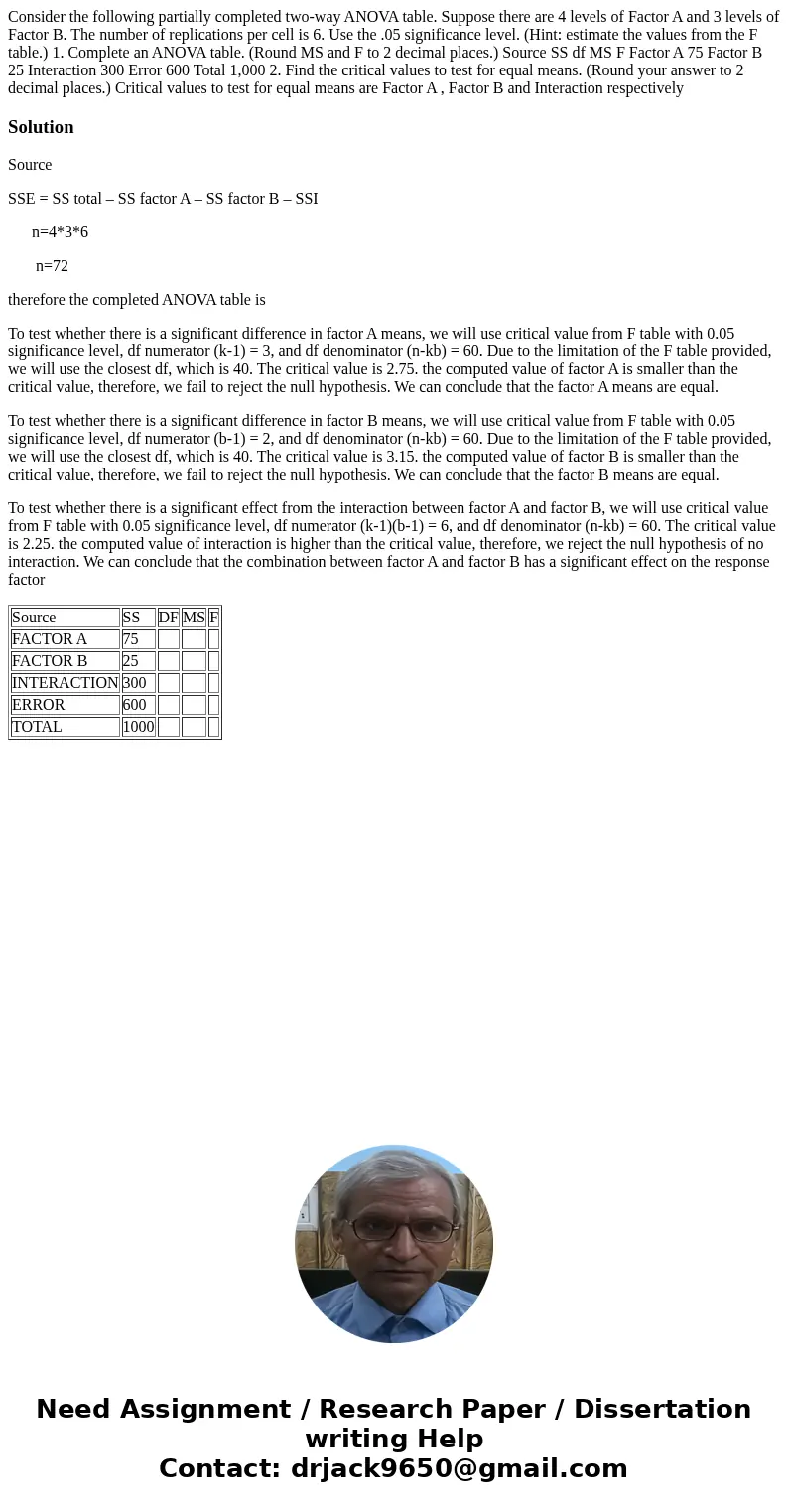Consider the following partially completed twoway ANOVA tabl
Consider the following partially completed two-way ANOVA table. Suppose there are 4 levels of Factor A and 3 levels of Factor B. The number of replications per cell is 6. Use the .05 significance level. (Hint: estimate the values from the F table.) 1. Complete an ANOVA table. (Round MS and F to 2 decimal places.) Source SS df MS F Factor A 75 Factor B 25 Interaction 300 Error 600 Total 1,000 2. Find the critical values to test for equal means. (Round your answer to 2 decimal places.) Critical values to test for equal means are Factor A , Factor B and Interaction respectively
Solution
Source
SSE = SS total – SS factor A – SS factor B – SSI
n=4*3*6
n=72
therefore the completed ANOVA table is
To test whether there is a significant difference in factor A means, we will use critical value from F table with 0.05 significance level, df numerator (k-1) = 3, and df denominator (n-kb) = 60. Due to the limitation of the F table provided, we will use the closest df, which is 40. The critical value is 2.75. the computed value of factor A is smaller than the critical value, therefore, we fail to reject the null hypothesis. We can conclude that the factor A means are equal.
To test whether there is a significant difference in factor B means, we will use critical value from F table with 0.05 significance level, df numerator (b-1) = 2, and df denominator (n-kb) = 60. Due to the limitation of the F table provided, we will use the closest df, which is 40. The critical value is 3.15. the computed value of factor B is smaller than the critical value, therefore, we fail to reject the null hypothesis. We can conclude that the factor B means are equal.
To test whether there is a significant effect from the interaction between factor A and factor B, we will use critical value from F table with 0.05 significance level, df numerator (k-1)(b-1) = 6, and df denominator (n-kb) = 60. The critical value is 2.25. the computed value of interaction is higher than the critical value, therefore, we reject the null hypothesis of no interaction. We can conclude that the combination between factor A and factor B has a significant effect on the response factor
| Source | SS | DF | MS | F |
| FACTOR A | 75 | |||
| FACTOR B | 25 | |||
| INTERACTION | 300 | |||
| ERROR | 600 | |||
| TOTAL | 1000 |

 Homework Sourse
Homework Sourse